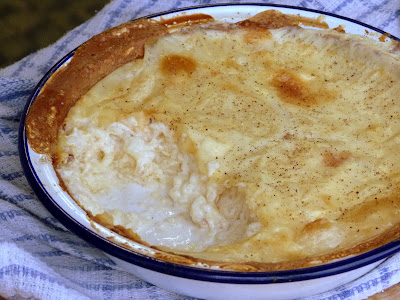Waddesdon Manor is a imposing, Renaissance-style house, based on a loire-style château, in North Bucks. Built in the late 19th century for the Baron Ferdinand de Rothschild to entertain guests and display his vast collection of art treasures, it has now been bequeathed to the National Trust and is the second most visited Trust property charging an entrance fee.
Although the Buckinghamshire porter cake with Oxfordshire blue cheese caught my eye we were both swayed by the Champagne tea, with its array of seasonal sandwiches, scones and cakes and a glass of festive fizz. For the virtuous amongst us, or those with allergies or intolerance, they even offer an 'amazing cake' that is fat, sugar and egg-free.
We were offered a choice of teas and a glass of either Waddesdon's own label champagne or rose. As was Christmas who could resist a glass of, very nice, pink bubbles. The teas, from Jeeves and Jericho in Oxford, came in little iron tea pots and I enjoyed my 'light and elegant' darjeeling first flush while the Ewing went for the good old Earl Grey, made with Estonian cornflowers no less, taken with plenty of milk and sugar.
The open faced sandwiches came out first; a selection of smoked salmon and prawn mayo on dark rye, and brie and cranberry and egg mayo on crusty white. The salmon was fine, but the prawn was delicious; the prawns were big and sweet and the sauce rich and tangy. The brie was nice, but the cranberry sauce was on the sharp side, even for someone who loves sour things as I do, and it overwhelmed the soft lettuce and creamy cheese slightly. As I don't like eggs the Ewing got double bubble on the egg mayo (despite not proffering one of her sarnies to me as a swap). She reported it as 'lovely, the second best sandwich on the plate'.
The cake stand from top to bottom: Panna cotta with mulled poached pear; chocolate roulade with chantilly cream; mini mince pie; freshly baked scone; strawberry jam and clotted cream.
The scone with jam and cream. Simple and lovely, the only criticism being it was served cold, meaning you miss out on that little puff of warm cake-scented steam as you break it open.
Their was a great festive twist to the panna cotta, the rich vanilla set custard, with just the right amount of wobble had been topped with slices of pear that had been poached in mulled wine. The chocolate roulade was properly decadent, a centre of rich cream surrounded by dense chocolate sponge and covered in a chocolate carapace dusted with white chocolate shavings.
The final hurdle was the mini mince pie drenched in icing sugar. I must admit I was struggling by this point, but, although the pastry was a little on the thick side, this was too tasty to pass up and I happily washed it down with the last dregs of tea and fizz.
At £40 including service this was an afternoon indulgence that seemed well worth it. A glorious, bright winter's day spent in beautiful surroundings, with some lovely grub and a giant Christmas tree to boot! Quite the civilised festive treat.
















































